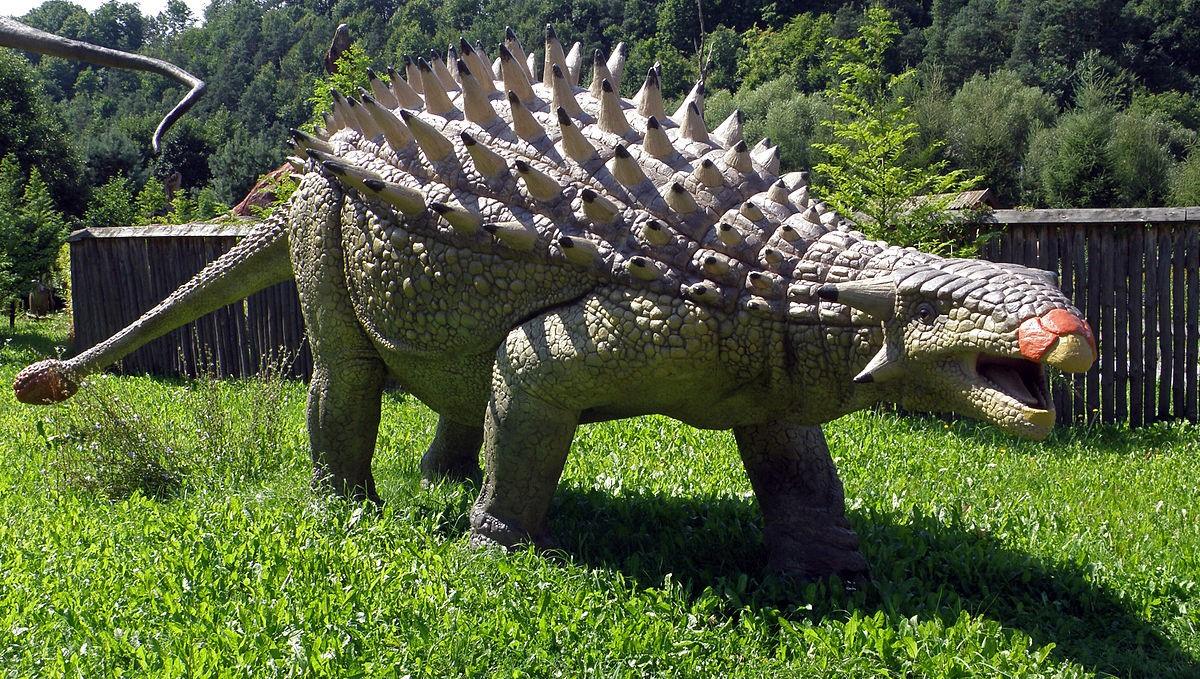
Ever wondered about the tank of the dinosaur world? Ankylosaurus, with its armor-plated back and hefty club tail, was a true prehistoric powerhouse. Imagine walking through a lush Cretaceous forest and stumbling upon this four-legged fortress. How did it live? What did it eat? And just how effective was that bony club against predators? Well, you're in luck! We're about to dive into 24 astonishing facts about the Ankylosaurus that will leave you amazed. From its incredible defense mechanisms to its mysterious lifestyle, get ready to be transported back in time and discover the secrets of this fascinating creature. Let's get cracking and uncover the wonders of the Ankylosaurus!
What Made Ankylosaurus So Unique?
Ankylosaurus, a name that conjures images of prehistoric battles and a world long gone, was truly a marvel of the dinosaur era. Known for its heavily armored body and club-like tail, this dinosaur stood out among its contemporaries for several reasons.
-
Armor – Ankylosaurus had bony plates covering its body, providing protection against predators. These plates, known as osteoderms, varied in size and shape, creating a formidable shield.
-
Tail Club – Perhaps its most distinctive feature, the tail of Ankylosaurus ended in a large, bony club. Scientists believe this could deliver powerful blows to deter attackers.
-
Size – It was one of the largest armored dinosaurs, with estimates suggesting it could grow up to 30 feet in length and weigh as much as 6 tons.
Ankylosaurus's Habitat and Lifestyle
Understanding where Ankylosaurus lived and how it spent its days gives us insight into the world it inhabited.
-
Habitat – Ankylosaurus roamed the Earth during the Late Cretaceous period, around 68 to 66 million years ago. Its fossils have been found in what is now North America, indicating it lived in forested areas that offered plenty of vegetation.
-
Diet – As a herbivore, Ankylosaurus fed on a variety of plants. Its flat teeth were perfect for grinding vegetation, suggesting it ate ferns, leaves, and possibly fruits.
-
Behavior – While much about its behavior remains a mystery, the defensive nature of its armor suggests Ankylosaurus was a solitary creature or lived in small groups, focusing on survival rather than social interaction.
The Fossil Record of Ankylosaurus
Fossils play a crucial role in piecing together our understanding of dinosaurs like Ankylosaurus.
-
Discovery – The first Ankylosaurus fossils were discovered in 1908 by Barnum Brown, a famous American paleontologist. Since then, several more fossils have been found, though complete skeletons remain rare.
-
Preservation – Ankylosaurus fossils are often found in a remarkable state of preservation, with many of the armored plates and even some soft tissues fossilized. This has allowed scientists to study their structure in detail.
-
Distribution – Fossil evidence shows that Ankylosaurus had a wide range across North America, from Montana to Alberta, Canada. This wide distribution suggests it was a successful species in its environment.
Ankylosaurus in Popular Culture
Despite its ancient origins, Ankylosaurus has captured the imagination of people today, featuring in books, movies, and more.
-
Movies and Media – Ankylosaurus has appeared in various films and documentaries about dinosaurs, often depicted as a gentle giant or a formidable opponent in battles with predators.
-
Toys and Games – It is a popular figure in dinosaur-themed toys and video games, where its distinctive armor and tail club make it a favorite among enthusiasts.
-
Educational Impact – Ankylosaurus plays a significant role in educational materials about dinosaurs, helping to spark interest in paleontology among young learners.
The Legacy of Ankylosaurus
Ankylosaurus's legacy extends far beyond its fossil remains. It represents a fascinating chapter in the story of life on Earth.
-
Evolutionary Significance – Ankylosaurus is an important subject of study for understanding the evolution of armored dinosaurs and their survival strategies.
-
Paleoart – It has inspired countless works of paleoart, where artists attempt to recreate the appearance and environment of ancient creatures based on scientific evidence.
-
Scientific Interest – Ongoing research into Ankylosaurus and its relatives continues to reveal new insights into their anatomy, behavior, and ecology, showing that even after millions of years, these ancient creatures still have much to teach us.
-
Cultural Icon – Beyond science, Ankylosaurus has become a symbol of strength and resilience, reminding us of the incredible diversity of life that has inhabited our planet.
-
Educational Tool – Its intriguing features make Ankylosaurus a compelling subject for educational programs, encouraging curiosity and learning about the natural world.
-
Inspiration for Creativity – Artists, writers, and filmmakers continue to draw inspiration from Ankylosaurus, using it to create compelling stories and visuals that capture the imagination of audiences around the world.
-
Conservation Message – By studying extinct creatures like Ankylosaurus, scientists and educators can highlight the importance of biodiversity and conservation, drawing parallels between past mass extinctions and the challenges facing modern ecosystems.
-
Global Fascination – The widespread interest in Ankylosaurus and other dinosaurs transcends cultural and national boundaries, uniting people in their curiosity and awe of the natural world.
-
Scientific Discovery – Each new fossil find adds to our understanding of Ankylosaurus, offering fresh perspectives on its life and times.
-
Paleontological Puzzles – Despite extensive study, Ankylosaurus still presents many unanswered questions, fueling ongoing research and debate in the scientific community.
-
Technological Advances – Modern technology, including CT scanning and 3D modeling, has opened new avenues for studying Ankylosaurus fossils, revealing details that were previously impossible to observe.
-
Timeless Appeal – The enduring fascination with Ankylosaurus and dinosaurs in general speaks to the timeless appeal of these ancient creatures, reminding us of the wonders that have existed on our planet.
A Final Glimpse at the Ankylosaurus
Diving into the world of the Ankylosaurus has been nothing short of a thrilling ride back in time. These armored giants, with their club tails and body armor, were the tanks of the Cretaceous period. They've fascinated us not just with their physical prowess but also with their survival strategies in a world dominated by predators. Understanding these creatures helps us appreciate the incredible diversity and complexity of life on Earth, past and present. As we've journeyed through the facts, it's clear that the Ankylosaurus was more than just a dinosaur; it was a symbol of resilience and adaptation. So, next time you gaze at the stars, remember the Ankylosaurus, whose legacy, like the constellations, continues to inspire curiosity and wonder in the hearts of those who dare to look back and imagine.
Was this page helpful?
Our commitment to delivering trustworthy and engaging content is at the heart of what we do. Each fact on our site is contributed by real users like you, bringing a wealth of diverse insights and information. To ensure the highest standards of accuracy and reliability, our dedicated editors meticulously review each submission. This process guarantees that the facts we share are not only fascinating but also credible. Trust in our commitment to quality and authenticity as you explore and learn with us.


